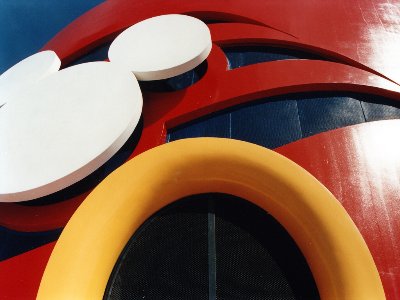Wing Chao: My favorite imagineer
Page 2 of 4
Wing and his team came of age with Disney's Grand Floridian Beach Club & Resort which opened on June 28, 1988. The AAA 4-Diamond hotel was entirely conceived in-house at WDI. Wing opted for the opulent splendor of the grand Victorian hotels of the past for the signature brand in the Disney hotel portfolio. The concept even tied to the history of the State of Florida as rich snow-birds like Henry M. Flagler worshipped the architectural style in the last years of the nineteenth century. However Wing was quick to realize that the fledgling architectural practice at WDI needed outside assistance and he called upon Wimberley Allison Tong & Goo to provide support. The resort was an instant success and eventually replicated around the world with variations in Paris, Hong Kong and now Tokyo. Wing had demonstrated that WDI (and the Disney Development Co. that managed the real estate development of the fore-runner to WDP&R - Walt Disney Attractions) could handle massive infrastructure projects that took Disney hotels into the entertainment architecture niche. Disney suddenly had hotels that were compelling and offered a truly immersive experience. Guests no longer had to schlep out to homogenized Kissimmee after a day at Magic Kingdom and EPCOT Center for a night's rest before another theme park day - they could stay within the confines of the Walt Disney World Resort and often at competitive pricing once the moderate category was created with Disney's Caribbean Beach Resort that was launched in '88.

View from the Disneyland Hotel towards Disney's Newport Bay Club in 1997
(through the area where Walt Disney Studios Park resides), Disneyland
Resort Paris
Click here for a much larger version of this picture
There is little doubt that EuroDisneyland was Michael's playground. The development of the first European Disney theme park resort gave the CEO a perfect excuse to start loitering around WDI's Glendale campus on a more frequent basis. Michael regularly told me that he was a frustrated imagineer - he love discussing new attractions and shows with the designers and engineers. However architecture was a passion for Michael - he adored the company of architects like Michael Graves and Robert A.M. Stern (the latter was Michael's personal architect and even became a member of the Board of Directors at the Company at one point). Michael decided that a competitive charette was necessary to determine the theme and design of every hotel at the Marne-la-Vallee site except for the Grand Floridian-inspired Disneyland Hotel. Wing was in his element as he flew back and forth working with the pitching architects who were a veritable Who's Who of architecture. Wing was the conductor as the executive team opted for Robert A.M. Stern's Newport Bay Club and Hotel Cheyenne, Michael Graves' Hotel New York, Antoine Grumbach's Disney's Sequoia Lodge and Disney's Hotel Santa Fe by Antoine Predock. Even Frank Gehry got in on the act as he conceived Festival Disney (now the Disney Village complex). Over the course of just a handful of years Disney went from an unknown (and unproven) novice in the architectural sphere to being one of the most desired blue-chip clients in the world. Wing was at the heart of that transformation. However his influence extended beyond the actual design to resort master planning that encouraged the Company to take a longer term view about development.

Disney's Animal Kingdom Lodge, Walt Disney World
Click here for a much larger version of this picture
The next decade became a whirlwind of development as Disney rolled out the Disney Vacation Club properties on the east coast and hotel development continued unabated at Walt Disney World Resort with the likes of Disney's Coronado Springs Resort and the late Peter Dominick's two award-winning hotels - Disney's Wilderness Lodge and Disney's Animal Kingdom Lodge. However many people would argue that Wing's crowning achievement is the Disney Cruise Line. Wing and his team had little experience of designing cruise ships but the debut of the Disney Magic altered the cruise industry forever. Both ships were the first in the industry to be designed and built from the keel up for the entire family. The 83,000 tonne vessels demonstrated that the magic of Disney in terms of hospitality and entertainment could be transferred successfully to a venture outside the berm. Wing decided to bring back the heyday of the great Transatlantic cruisers like the Mauretania and Queen Mary. The ships are awash with classical stylings that ensured that the grandeur of the past became the language of the ships. The design team opted for an exaggerated bridge, classic (fake) funnels and an elongated bowline. Inside both ships were plussed with Disney motifs that were visible but maintained the elegant architectural style that the imagineers craved. The end product was a seamless blend of the classical and Disney. Wing led the entire creative process from the actual vessel design to the restaurant interiors to the artwork hanging in the passageways. His attention to detail has been appreciated by thousands of cruisers since - many of which had never cruised before Disney got into the business and others that have no intention of ever sailing with another company. From 2011 and 2012 guests will be able to voyage on the Disney Dream and Disney Fantasy - two 128,000 tonne ships. Wing has spent the past few years ensuring that the new cruisers live up to the lofty standards of the first two.

The Disney Cruise Line
Click here for a much larger version of this picture

The Disney Magic, Disney Cruise Line
Click here for a much larger version of this picture
